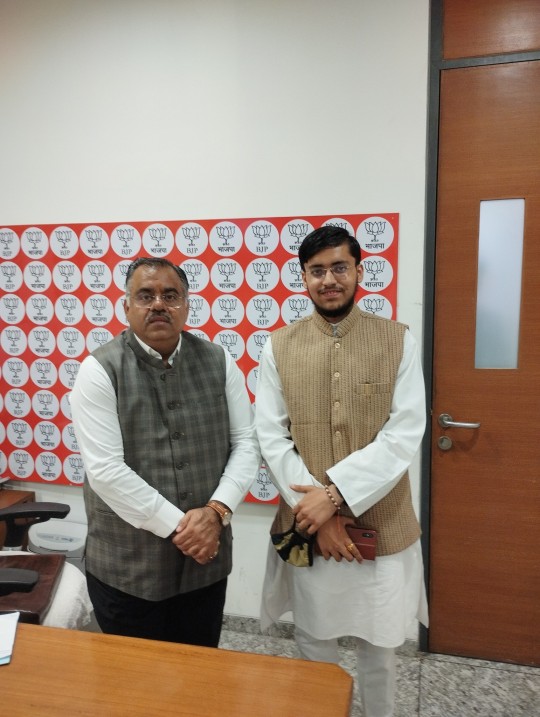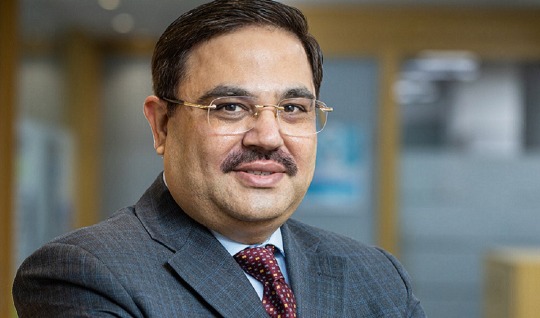#Ravi Subramanian
Photo










The Atrocity Exhibition (Jonathan Weiss, 1998).
#the atrocity exhibition#the atrocity exhibition (1998)#jonathan weiss#j.g. ballard#anna juvander#bud gardner#ed parker#chad sipkin#ravi subramanian#jen tracy
44 notes
·
View notes
Text
Two Murders and some Bitcoins.
BookReview #ThrillerNovel #BankingThriller #Cryptocurrency #Bitcoin #MysteryNovel #Investigation #Cybercrime #SuspensefulRead #RaviSubramanian #GodIsAGamer #TechAddiction #Whodunit #VirtualMoney #InternetGames #FinancialInstitutions
In the realm of literature, Ravi Subramanian once pondered the idea of abstaining from his writings about the corporate world. However, succumbing to the whims of the audience, he decided to entertain and satisfy their desires. Indeed, an individual lacking literary finesse may be characterized as one who indulges in books only once, never truly relishing their full essence. It is only when the…

View On WordPress
#banking thriller#bitcoin#book review#Cue Card-BlogAdda#cybercrime#financial institutions#God is a Gamer#internet games#investigation#mystery novel#Ravi Subramanian#reading challenge#tech addiction#thriller#virtual money#whodunit
1 note
·
View note
Text

Yenni Thuniga (transl. Count and dare) is a 2022 Indian Tamil-language action crime film written and directed by S.K.Vettri Selvan and Produced by Suresh Subramanian. The film was under Production House Rain Of Arrows. Entertainment.[1] The film was distributed by Krikes Cine Creations.[2] The film features Jai and Athulya Ravi in the lead roles while Vamsi Krishna was cast in as the main antagonist and Sunil Reddy also appears in a negative role as a politician. The film's music is composed by Sam CS with cinematography handled by J. B. Dinesh Kumar and editing done by V. J. Sabu Joseph. The film was released theatrically on 4 August 2022.[3]
Plot
This article needs an improved plot summary. Please help improve the plot summary.(August 2022) (Learn how and when to remove this template message)
After a heist job by Madhan and gang to rob a precious cargo became a mess, he is under pressure to deliver the loot to the overlords. Things begin to get complicated when Kathir appears and disrupts Madhan’s plan and reveals what happened that day.
Cast
Jai as Kathir
Athulya Ravi as Narmada
Anjali Nair as a victim's wife
Vamsi Krishna as Madhan
Vidya Pradeep as Teja
Marimuthu as Kathir's father
Sunil Reddy as 'Needhi' Manikkam
Kuraishi as Saravanan
Munnar Ramesh
Abhishek Shankar as Doctor
Suresh Subramanian as Sam
Kimberly Ziler as Naomi
Maurice Johnson as Joe
Jayce Venditti as Gabe
#adult human female#gender critical#gendercritical#gendie#lgb#moid#moid moment#radfem#radical feminists do interact#terf#trans women are men#trans cult#trans exclusionary radical feminist#terf safe#tehm#terfsafe#terfblr#radical feminism#radical feminist safe#rad fem#rad feminism#radblr#moids#ywnbaw#moid receipts#tra receipts#gendie receipts#gender cult#trans men are women#terfs please touch
782 notes
·
View notes
Text
A System Architect’s Perspective on Quantum Computing: An Interview with Dr. Gokul Subramanian Ravi
Dr. Gokul Subramanian Ravi has been a career computer scientist. He is an assistant professor and active researcher in quantum computing at the University of Michigan. In this interview, we talked about the philosophy and technology of quantum computers. Dr. Ravi talked about quantum computers, its need, current state, architecture, and quantum advantage at length. While this interview is more technical than previous ones in quantum chats, it is very enjoyable and informative.

Mihir: Why do we need quantum computers? Classical computers are getting better every day. Can’t we just use classical computers for everything?
Dr. Ravi: That’s a good question. The classical computers’ capability is not increasing as fast as it used to be. We all have heard about Moore’s law failing. Thus, there is a fundamental need for new technology. We want more computing capabilities in any form, not specifically quantum computing. Today, computing and computers are the most fundamental driver of innovation. We want to keep pushing for new innovations. That reason motivates us towards emerging technologies, quantum computing being one of them.
Some problems are exponentially hard to solve. That means the computational resources required to solve such problems increase exponentially with the increase in problem size. Classical computers quickly reach their limitations in addressing this kind of problem. For example, to discover new medicines, you want to understand chemistry between two chemical molecules. You can’t mix thousands to chemicals together in the lab and study them, so computer simulations are done. Computational models for solving such problems represent each molecule as some numerical interaction and perform calculations to predict the molecular interactions. As the size of molecule increases, the numerical equations become exponentially complicated and soon reach the limits of classical computers. The reason for that is at the molecular level, when we are considering electrons; we cannot ignore some of the non-trivial forces, which we generally ignore in day to day calculations like gravity. With number of electrons, these forces become very large in numbers, hence the exponential growth of the problem. These are called quantum mechanical properties.
When Richard Feynman proposed quantum computing, the idea was that we needed a device that was able to simulate quantum mechanical properties and such a device would be quantum computing machine. Thus, quantum computer is specifically of interest for solving large-scale scientific problems in physics, chemistry etc. Other problems, like factoring, also have important application of quantum computing. If you are able to factor a number quickly, that has implication in security and cryptography. Factoring is a classical problem, not quantum, but there is a method that can solve factoring faster than a classical computer can. Quantum computer has a long way to do. However, in theory, there are quantum, classical as well as scientific problems that can be solved more efficiently using quantum computer than any classical computer.
Mihir: As you said, classical computers are reaching its capacity and no longer growing as fast as they were. As a result, we need new technologies to fill that gap and continue expanding our computational power. Is quantum computing one such new technology or are we calling a group of technologies quantum computing? Are we able to define quantum computer today?
Dr. Ravi: Again a very good question. In general, we would define quantum computer as a technology that is able to exploit quantum mechanical properties towards computing. Within that definition, all different technologies like supercomputing qubit, trapped ion qubit, neutral atoms, and photonic qubits are quantum technology. In their own way they all are exploiting quantum mechanics. If we are being very specific than you are absolutely right that quantum computing is an umbrella term. However, broadly they all fall within the same scope of exploitation of quantum mechanics.
Mihir: In my understanding, a problem has to be converted to a mathematical formula to make an algorithm that can be computed by a classical computer. Is that true for quantum computing also?
Dr. Ravi: I would say yes and no. I would approach this question in two different ways. Think of a problem which can be solved 90% on a classical computer and only last 10% needs a quantum computer because that last part is really exponentially hard. In classical computer, we would use an approximation and perhaps accept a 90% solution. We still need mathematical formula to reach that 90% solution and then improve beyond 90% using a quantum computer. We want to continue to use classical computer to go as far as we can, because quantum computer is always going to be an expensive resource.
Now the other question: is the quantum computing also based on a mathematical formula? I would argue, yes to some extent. Let’s take an example of a classical computer. In designing a complex machine learning algorithm, the algorithm would have complex metrics, its addition, multiplication and many complex mathematical operations. When coded onto a classical computer, a compiler would take that and through multiple steps ultimately pass down to transistors. Transistors would always work in a series of 0 and 1, no mathematical formula there. Thus, classical computer is formulas up to transistors and then it is just transistors’ natural property of 0 and 1.
Quantum computer is not much different. Let’s take example of chemistry. Let’s assume that we are trying to find energy of some chemical molecule, a common problem in chemistry. There are techniques like Jordan Wigner method, which converts fermionic (chemistry) form to the qubit form. There would be cleaning and optimization steps to remove non-important components from the molecular formula and properties. Finally, the qubit form is run on a quantum computer. If we assume there are twenty steps in calculating molecular energy, than nineteen of them are mathematical like cleaning, optimization, Jordan Wigner transformation and so on. Only the twentieth step is quantum computing, similar to going to the transistors in classical computing.
Mathematics and software gets less focus in quantum computing, because everybody is focused on qubits. Whereas in classical computing, we don’t think about transistors anymore.
Mihir: Let’s pivot now to system architecture. What is the simplest way to define system architecture irrespective of technology?
Dr. Ravi: Entire system is made up of multiple layers known as abstraction layers. One layer is an application like zoom or software doing chemistry calculations. Second layer is algorithm that application runs on. Then you have instruction layer like instruction set architecture which runs your device. To convert algorithm to instructions, you need a compiler. You may also have an operating system that is doing resource management. Another layer is micro architecture of the computer, which is how the computer is designed. This micro architecture has components like circuits and circuits are made up of transistors for classical bits or qubits.
System architecture is interactions between these different layers. Hardware architects focus on interactions between circuits, transistors and qubits like hardware components. Architects working at micro-architecture levels organize components within a processor. Other types of system architects deal with interaction between compiler and hardware, or compiler and algorithm, or stacking servers to build complex super-computing architecture. System architect is a broadly defined term for a group of experts working anywhere among different layers of hardware and software and they understand the pathway from application to technology. It is a complex pathway and system architects usually work on only a subset of different layers.
Mihir: How has the role of system architect evolved over the year?
Dr. Ravi: Yes, the role has definitely changed over the years. That change has come based on the needs. During the seventies, there were so many opportunities and needs in a single layer of the stack that a person can focus on being expert of just one layer like on micro-architecture or compiler. Early 2000s, computers started to reach limits of computational power within a single core and multi-core systems became a norm. That prompted change in the role of some system architects. They asked questions about parallelization of processes, dependencies between applications and different cores and other questions that system architects did not think about before. Because the capacity of processors was not increasing rapidly, the focus shifted to building accelerators. Again that had an impact on role of system architects. The architects needed to look at multiple layers from application to processors, but they were focusing on just one application. Earlier system architect’s role was broad within a layer or two. Modern system architect’s role has become deeper than broader.
Mihir: While systems architecture was evolving for classical computing we had opportunities to try and fail. Now that we have all these knowledge about computing, we have to use our knowledge in quantum computing. We do not have enough opportunity to try new things and fail, isn’t it?
Dr. Ravi: Again, a very good question. On one hand it has been a huge positive that we have learned to build a full stack in classical computing and we can apply that knowledge to quantum computing. For example, IBM has been at the forefront of building system architecture for classical computing; it is applying that knowledge to the quantum computing and doing very well.
On the other hand some of the strategies and habits that work in classical computing may not work in quantum computing. In emerging technology you can’t start with being broadly expert in one layer like how classical computing started. We have to be flexible. As other layers are evolving, system architect in quantum computing needs more depth and flexibility in their knowledge and approach.
0 notes
Text
#Interview - "Corruption is not because of a lack of process and control. Corruption takes place because in every industry, every facet of life, you come across people who are willing to innovate and improvise to break those controls and processes. Corruption is not because of a lack of technology or innovation, but because of a lack of conscience. Irrespective of trends in digital banking or cryptocurrency, fraudsters will always figure out a way to be ahead of the curve. Haven’t you heard of scams in the world of bitcoins?"
#booksofinstagram#booksbooksbooks#bookslover#bookstagram#bookrecommendations#storizenmagazine#bookreview#books#bookshelves#bookreviewer
0 notes
Text
Book Review: Evoked
Among the top 10 contestants of The Times of India—Write India campaign, Mansi Babbar is the co-author of this thriller series presented by award-winning author Ravi Subramanian
Introducing the series, Ravi Subramanian calls this a fast-paced novella, applauding the young co-author for having chosen the difficult genre of crime fiction. Subramaniam elucidates, “…in our country, romance and…

View On WordPress
0 notes
Text

भारतीय जनता पार्टी के राष्ट्रीय महासचिव व वरिष्ठ राजनेता आदरणीय श्री तरूण चुघ जी के साथ भाजपा नेता एवं केसरिया रक्षा फाउंडेशन के राष्ट्रीय अध्यक्ष अविरल मलिक Tarun Chugh
Narendra Modi Rajnath Singh Bharatiya Janata Party (BJP) Nirmala Sitharaman Dr S. Jaishankar Nitin Gadkari MYogiAdityanath Dr Jitendra Singh Ravi Shankar Prasad Faggan Singh Kulaste Dr.Ramesh Pokhriyal Nishank Narendra Singh Tomar Dr. Subramanian Swamy Dr. Sambit Patra Dr S. Jaishankar Dr. Virendra Kumar Dr. Satyapal Singh Dr. Narottam Mishra Charu Pragya
0 notes
Text
Difference between Hurt and Grievous Hurt under IPC, 1860

This article on 'Hurt and Grievous Hurt under the IPC, 1860' was written by Farhat Sultana, an intern at Legal Upanishad.
Introduction
The Indian Penal Code (IPC) of 1860 is the main criminal code of India that lays down the rules and regulations governing criminal offenses in the country. One of the fundamental distinctions within the IPC is between hurt and grievous hurt, two distinct categories of criminal offenses that differ in severity and punishment.
In this article, we will first provide a brief overview of the IPC, followed by an explanation of the difference between hurt and grievous hurt. We will then examine the provisions of the IPC governing hurt and grievous hurt in detail, including their definitions and punishments, along with relevant case law examples. Finally, we will highlight the key differences between the two offenses and the importance of distinguishing between them.
Definition of Hurt under the Indian Penal Code, 1860:
Section 319 of the IPC defines "Hurt" as any bodily injury that is caused to a person and is not likely to cause death or grievous hurt. The section prescribes punishment for causing hurt, which can be imprisonment for a term of up to three years or a fine, or both.
Hurt can be caused by any means, including by the use of a weapon, and the severity of the injury can vary from a minor injury to a serious one. The key element in determining whether an act constitutes hurt under the IPC is the extent of the injury caused.
Section 323 of the IPC deals with punishment for voluntarily causing hurt. It states that whoever voluntarily causes hurt shall be punished with imprisonment of either description for a term which may extend to one year, or with a fine which may extend to one thousand rupees, or with both.
State of Himachal Pradesh v. Tek Chand (2007): In this case, the accused had attacked the victim with a sickle causing grievous injuries. The court held that the accused had intentionally caused hurt with the intention to cause death or grievous hurt. The accused was convicted under Section 307 of the IPC and sentenced to rigorous imprisonment for seven years.
Gurjit Singh v. State of Punjab (2013): In this case, the accused had assaulted the victim with a stick causing him hurt. The court held that the accused had voluntarily caused hurt and was guilty under Section 323 of the IPC. The accused was sentenced to six months of rigorous imprisonment.
Sankara Subramanian v. State of Tamil Nadu (2009): In this case, the accused had assaulted the victim causing hurt. The court held that the accused had voluntarily caused hurt and was guilty under Section 323 of the IPC. The accused was sentenced to three months of rigorous imprisonment.
Grievous Hurt under the IPC, 1860
Section 320 of the Indian Penal Code (IPC), 1860, defines "grievous hurt" as an injury that endangers or is likely to endanger life or cause severe physical pain or disability or disfigures any part of the body. The section further divides grievous hurt into two categories: hurt which endangers life or causes the victim to be in severe physical pain and hurt which causes the victim to be disabled or disfigured.
Section 326 of the IPC provides for the punishment for causing grievous hurt, which can be imprisonment for a term of up to 10 years and/or a fine.
Baldev Singh v. State of Punjab (2011): In this case, the accused had hit the victim with a sharp-edged weapon, causing injuries that required stitches. The court held that the injuries amounted to grievous hurt under section 320 of the IPC and the accused was convicted under section 326 of the IPC.
Abdul Majid v. State of Rajasthan (2010): In this case, the accused attacked the victim with a knife, causing injuries that required medical treatment. The court held that the injuries amounted to grievous hurt under section 320 of the IPC and the accused was convicted under section 326 of the IPC.
Ravi Kumar v. State of Haryana (2017): In this case, the accused had poured acid on the victim, causing severe burns and injuries. The court held that the injuries amounted to grievous hurt under section 320 of the IPC and the accused was convicted under section 326 of the IPC.

Difference between Hurt and Grievous Hurt under IPC, 1860
Differences between Hurt and Grievous Hurt
Hurt and grievous hurt are two distinct types of offenses under criminal law. The key differences between the two are:
Nature and extent of injury: Hurt refers to any bodily injury that causes pain or harm to a person. It includes minor injuries like scratches, bruises, or simple fractures. On the other hand, grievous hurt refers to any injury that endangers life or causes permanent damage to a person's health. It includes serious injuries like fractures of bones, disfigurement, or impairment of any organ or limb.
Level of punishment: The punishment for hurt is comparatively less severe than that for grievous hurt. Hurt is usually punishable with imprisonment for up to three months, a fine of up to Rs. 500, or both. Whereas grievous hurt is punishable with imprisonment for up to seven years, a fine, or both.
Intent: To constitute the offense of grievous hurt, there must be an intention to cause such harm. In contrast, the hurt may be caused intentionally or unintentionally.
It is important to distinguish between these two offenses because the punishment and severity of the crime are different for each. If a person causes minor injuries, it may be classified as hurt, and the punishment may be less severe. However, if the same person causes severe or life-threatening injuries, it may be classified as grievous hurt, and the punishment may be more severe.
Moreover, it is crucial to differentiate between the two offenses to ensure that the victim receives appropriate compensation and medical treatment. In cases of grievous hurt, the victim may require extensive medical attention, and the offender may be required to provide compensation for medical expenses.
Therefore, it is essential to distinguish between hurt and grievous hurt to ensure that the offender receives appropriate punishment and that the victim receives proper compensation and medical treatment.
Conclusion
The Indian Penal Code (IPC) of 1860 plays a significant role in protecting victims of hurt and grievous hurt. The IPC defines and punishes offenses related to bodily harm, including hurt and grievous hurt. It also lays down the procedure for the investigation and prosecution of such offenses.
The IPC provides for the punishment of those who cause hurt or grievous hurt to another person, with imprisonment and/or a fine. It also recognizes certain circumstances where causing hurt or grievous hurt may be legally justified, such as in self-defense or the performance of a legal duty.
The significance of the IPC in protecting victims of hurt and grievous hurt lies in its role in deterring offenders, providing justice to victims, and upholding the rule of law. The existence of clear laws and procedures for dealing with such offenses helps to ensure that victims are not left without recourse and that offenders are held accountable for their actions.
Overall, the IPC has been an important tool in protecting victims of hurt and grievous hurt in India, and its continued enforcement and improvement remain crucial for ensuring the safety and well-being of individuals.
List of References:
- Hurt and Grievous Hurt: Concept and Explanation, Aligarh Muslim University, available at: https://old.amu.ac.in/emp/studym/100000876.pdf
- CHAPTER 10; HURT AND GRIEVOUS HURT, Manupatra, available at: student.manupatra.com/Academic/Abk/Indian-Penal-Code/chapter10.htm#:~:text=Whoevervoluntarilycauseshurtif,voluntarilytocausegrievoushurt."
- Aparna Shukla, Difference Between Hurt and Grievous Hurt under IPC, Lawctopus, 23 October 2020, available at: https://lawctopus.com/clatalogue/ailet-pg/hurt-and-grievous-hurt-under-ipc/
Read the full article
0 notes
Text
CBI charge-sheets former NSE CEO Chitra Ramkrishna, ex-IPS Sanjay Pandey, 11 others in illegal phone-tapping case
CBI charge-sheets former NSE CEO Chitra Ramkrishna, ex-IPS Sanjay Pandey, 11 others in illegal phone-tapping case
The Central Bureau of Investigation (CBI) has filed charge-sheet against seven former top officials of National Stock Exchange (NSE) including Ravi Varanasi, Chitra Ramkrishna and Anand Subramanian, and three ex-employees of ISEC Services Pvt Ltd, such as retired Mumbai police commissioner Sanjay Pandey, in the telephone-tapping case.
The CBI charge-sheet against 11 entities, including ISEC, was…

View On WordPress
0 notes
Text
Bestseller Review: Bestseller is a good web series made on a very rubbish book
Bestseller Review: Bestseller is a good web series made on a very rubbish book
Bestseller Review: It can be said that this web series is better, but not a bestseller. This web series has become much better than Ravi Subramanian’s book which was boring and poor. Do binge watching together or watch it in pieces, if there is no availability of any better content then you can watch it.
#Bestseller #Review #Bestseller #good #web #series #rubbish #book
View On WordPress
#amazon prime video#Arjan Bajwa#bestseller#Bestseller Review#book#Gauahar Khan#Gauhar Khan#good#Mithun Chakraborty#Review#rubbish#Satyajit Dubey#series..#Shruti Haasan#shruti hassan#Sonal Kulkarni#web
0 notes
Text
This Diwali, home loans demand is likely to accelerate despite EMIs getting costlier. Here's why
New Post has been published on https://petnews2day.com/pet-industry-news/pet-financial-news/this-diwali-home-loans-demand-is-likely-to-accelerate-despite-emis-getting-costlier-heres-why/
This Diwali, home loans demand is likely to accelerate despite EMIs getting costlier. Here's why
It needs to be noted that during the festive season, home buyers tend to invest in properties. The upcoming festival is expected to be no different especially currently when the real estate sector has made a strong comeback after the pandemic. Buying affordable homes is likely to pick up momentum. Home loans are one of the mediums for buying a dream house as they eliminate the need for lumpsum cash. Home loans have flexible tenures and reduce the burden of gathering hefty cash to buy houses since you can repay your dues via equated monthly instalments (EMI). Also, there are tax benefits of ₹1.5 lakh applicable on your home loan principal amount under section 80C of IT ACT, among others.
This fiscal year FY23, RBI hiked the repo rate by 190 basis points in the four consecutive policies to 5.9% which forced banks and NBFCs to hike home loan interest rates making EMIs costlier. However, the demand for affordable housing stays robust and the festive season is likely to set a path for strong growth in the sector.
The 5-days Diwali festival will begin on October 22 with Dhanteras followed by Lakshmi Pujan (Main Diwali) on October 24 and to end on October 26 with Bhai Dooj.
According to Sahil Shah – Director, Investments at Certus Capital and Earnnest.me., the real estate sector has made a tremendous comeback after the pandemic. CY2022 is shaping up to be one of the best years for residential sales in almost a decade after prices remained practically flat, in real terms, between 2015 and 2021. Another factor driving people to buy homes is their experience during the lockdown when they were restricted to staying within four walls.
Shah added that “Today, most are looking to buy/upgrade to the best home they can afford. COVID-19 also shifted the focus towards spacious homes, away from densely packed cities. For the more affluent / HNI segment, second homes have emerged as a sought-after option, both from an investment and long-stay use perspective. Finally, there is a certain migration from tier 1 cities to tier 2, as certain sectors embrace, especially tech, embraced remote working.”
Meanwhile, Manish Sheth, MD & CEO, of JM Financial Home Loan believes there are factors that will spark stronger demand for housing loans in the upcoming festive period. He said, “We need to understand that as the Indian economy bounces back above pre-covid levels of activity, the same trend will be seen with consumer spending.”
“We can expect more Indians to be splurging on essentials that will include homes. Homeownership has become a necessity rather than a luxury. If we are to analyse credit growth rates across the different geographies and sectors in India today, it is clear that we are at the start of a long-term upcycle and it seems improbable that demand will wane anytime soon. The monsoon this year has been good and the mood is upbeat among upcountry consumers as well,” Sheth added.
“All these factors will fuel stronger demand growth in housing loans in the upcoming festive period,” JM Financial Home Loan CEO said.
Furthermore, Ravi Subramanian, MD, and CEO of Shriram Housing Finance highlight that the festive cheer is back after 2 years with consumer sentiment being upbeat this festive season. The real estate sector has seen a buoyant demand in the post-pandemic era.
Subramanian said, this trend seems to continue gaining momentum during the upcoming festive season when buyers tend to invest in properties because it is considered to be an auspicious period for home buying. Further, riding on the wave of sustainability and prospective investment, the secondary housing segment has emerged as a sought-after option for buyers. Buyer behaviour across cities have changed and the preference to buying vs renting is a trend we have seen take prominence. Many home buyers due to WFH and flexible working hours have moved to larger premises.
Also, the Shriram Housing Finance CEO added, “We are seeing a consumer shift, where buyers are keen to upgrade from 1 BHK to 2 BHK and 2 BHK to 3 BHK. Further, with flexibility in the place of work, we are also seeing consumers buying or upgrading their residences in their home towns, thus driving up demand in tier 2 and tier 3 cities for affordable home loans in the country. The confidence in future earnings, coupled with the pandemic-induced importance of homeownership, will continue to drive residential sales this festive season in Tier 2/3/4 cities. Shriram Housing Finance is among the top 5 affordable housing finance companies in India and we are expecting demand for affordable home loans this festive season to be 25-30% higher than the last 2 years.”
Here are some of the major banks’ and NBFCs’ home loan rates
SBI home loan rates
SBI is offering a concession of 15 basis points to 20 basis points as a festive campaign offer between October 4, 2022, to January 31, 2023. Under the campaign, the interest rate varies from 8.40% to 9.05%. This is compared to normal interest rates ranging from 8.55% to 9.05% on home loans.
The interest rates are on regular home loans and will depend upon a borrower’s CIBIL score.
ICICI Bank home loan rates
After RBI hiked the repo rate by 50 basis points to 5.9% on September 30th, ICICI Bank followed by increasing its benchmark lending rate.
Currently, a salaried employee at ICICI Bank pays interest rates from 8.60% to 9.35% on home loans up to ₹35 lakh, and from ₹35 lakh to ₹75 lakh. On home loans above ₹75 lakh, the rates vary from 8.60% to 9.45%.
The interest rates are higher by 10 basis points to 15 basis points for home loans to self-employed borrowers.
HDFC home loans interest rates
This NBFC giant offers home loans starting at 8.4% per annum to a maximum of 8.90%. The interest rates are applicable to Home Loans, Balance Transfer Loans, House Renovation, and Home Extensions Loans.
Further, under standard home loans, the NBFC offers 8.60 – 9.10% and 8.65 – 9.15% to women and others on loans up to ₹30 lakh. The rate of interest is between 8.85 – 9.35% for women and 8.90 – 9.40% for others on home loans between ₹30.01 lakh to ₹75 lakh. Meanwhile, on home loans from ₹75.01 lakh and above, the interest rates are 8.95 – 9.45% for women and 9.00 – 9.50% for others.
<![CDATA[.authorSearchmargin:20px; border-radius: 4px; border: solid 1px #e0e0e0; background:#fff; .authorInp height:40px; width:86%; padding:11px 16px; color:#212121; border:0; box-sizing:border-box; float:left; font-size:14px; font-weight:700; .authorInp::placeholder color: #bdbdbd; .authorBtn background:url(https://images.livemint.com/static/icon-sprite.svg) no-repeat -24px -10px #fff; cursor:pointer; float:right; width:20px; height:20px; border:0; margin:11px 16px 0 0 .authoeSlider background:#f5f5f5; box-sizing:border-box; margin-bottom:9px; white-space:nowrap; width:100%; overflow-x:unset; padding:0; .authoeSlider a display:inline-block; cursor: pointer; margin:0 10px; border-bottom:3px solid #f5f5f5; padding:9px 0; font-size:12px; color:#212121; font-weight:400; font-family: 'Lato Regular',sans-serif; .authoeSlider a.activeborder-color:#f99d1c; color:#f99d1c; font-weight:900; font-family: 'Lato Black',sans-serif; .authoeSlider a:hovercolor:#f99d1c; .authorSecpadding:0 20px 20px; .authorBox width:48.5%; padding: 12px; float:left; margin-top:16px; border-radius: 4px; border: solid 1px #e0e0e0; background-color: #fff; box-sizing:border-box; .authorBox:nth-child(odd)margin-right:7px; .authorBox:nth-child(even)margin-left:7px; .authorImg width:62px; height:62px; border:1px solid #f99d1c; float:left; padding:4px; box-sizing:border-box; border-radius:50%; .authorImg img width:54px; height:53px; border-radius:50%; .authorDesc margin:0 0 0 9px; float:Left; width: calc(100% - 71px); .authorDesc h2margin:0; padding:0; font-weight:900; color:#000; font-size:16px; font-family: 'Lato Black',sans-serif; margin-bottom:5px; white-space:nowrap; overflow: hidden; text-overflow: ellipsis; .authorDesc h2 acolor:#000; .authorDesc h2::after display:none; .authorDesc h1 display: block; float: none; width: 100%; padding: 0; .authorDesc h5 display: block; width: 100%; font-weight:400; color:#757575; font-size:14px; font-family: 'Lato Regular',sans-serif; margin-bottom:5px; white-space:nowrap; overflow: hidden; text-overflow: ellipsis; .twitterAuthor background:url("https://images.livemint.com/dev/ico-tw.svg") no-repeat 0 0; width:20px; height:20px; margin-right:18px; float:left; margin-top:2px; .emailAuthor background:url("https://images.livemint.com/dev/ico-emai.svg") no-repeat 0 0; width:20px; height:20px; float:left; margin-top:2px; .followAuthor padding:4px 11px; font-weight:900; color:#424242; font-size:12px; font-family: 'Lato Black',sans-serif; border:1px solid #d2d2d2; float:right; border-radius:25px; .followAuthor spanmargin-left:6px; .authorBox2 width:100%; padding: 12px; margin-top:16px; margin-bottom:5px; background-color: #fff; box-sizing:border-box; .authorInfoborder-top: solid 1px #e4e4e4; margin-top:10px; padding:10px; font-weight:400; color:#424242; font-size:16px; line-height:22px; font-family: 'Lato Regular',sans-serif; .fs16 font-size:16px; a.authorlinkmargin: 0; padding-top: 0; background-position: right center; font-size:12px; text-transform:uppercase; .noAuthorbackground:#fff; padding:100px; text-align:center; margin-bottom:5px; .noAuthor strong display:block; font-weight:700; color:#2f2f2f; font-size:16px; font-family: 'Lato bold',sans-serif; margin-bottom:8px; .noAuthor span display:block; font-weight:400; color:#757575; font-size:14px; font-family: 'Lato Regular',sans-serif; margin-bottom:12px; .noAuthor afont-weight:900; padding:13px 27px; text-transform:uppercase; display:inline-block; color:#fff; font-size:12px; background:#f99d1c; font-family: 'Lato Black',sans-serif; border-radius:4px; .authorSubHead font-weight:900; color:#757575; font-size:12px; font-family: 'Lato Black',sans-serif; padding:0 20px 12px; .authorsHolder padding:0 16px; a.authorsName padding:7px 41px 7px 12px; border:1px solid #d2d2d2; font-weight:900; color:#424242; font-size:14px; font-family: 'Lato Black',sans-serif; display:inline-block; background:url("https://images.livemint.com/dev/add-author.svg") no-repeat 90% center; margin:0 2px 10px; border-radius: 25px; a.authorsName.selected background-image:url(https://images.livemint.com/dev/added-author.svg); background-color:rgba(249, 157, 28, 0.1); border-color:#f99d1c; .selectedAuthors margin-top:20px; .authoeSlider .swiper-containerpadding:0; .authoeSlider .swiper-container .swiper-button-next, .authoeSlider .swiper-container .swiper-button-prevmargin-top:-14px; .authoeSlider .swiper-container .swiper-button-prevmargin-left:0; .authoeSlider .swiper-slidewidth:auto; .authoeSlider .swiper-container .swiper-button-next span, .authoeSlider .swiper-container .swiper-button-prev spanmargin-top:5px; .authorBoxSecmargin:16px 20px; .authorBox2.authorBox2Storypadding: 16px; border-radius: 4px; border: solid 1px #e4e4e4; background-color: #fbfbfb; .authorBox2.authorBox2Story .authorImgwidth:37px; height:37px; .authorBox2.authorBox2Story .authorImg img width: 28px; height: 28px; border-radius: 50%; .authorBox2.authorBox2Story .authorInfofont-size:14px; line-height:22px; padding-bottom:0; .authorBox2.authorBox2Story .authorDesc h5 margin-bottom:0; margin-top:4px .authorHeader text-transform:uppercase; font-size: 12px; font-weight: 900; color:#757575; font-family: 'Lato Black',sans-serif; margin-bottom:10px; @media(max-width:767px) .authorSearchmargin:16px; .authorBoxwidth:100%; float:none; .authorSecpadding: 0 16px 16px; .noAuthorpadding:100px 20px; .authorSubHead padding:0 16px 12px; .authorsHolder padding:0 12px; .selectedAuthors margin-top:16px; .authorBoxSecmargin:16px; .authorBox:nth-child(odd)margin-right:0; .authorBox:nth-child(even)margin-left:0; .authorBox2margin-top:0; ]]>
Catch all the Business News, Market News, Breaking News Events and Latest News Updates on Live Mint.
Download The Mint News App to get Daily Market Updates.
More
Less
0 notes
Text
After RBI’s repo rate hike, another 75 basis points hike possible over next 60-75 days: Ravi Subramanian
After RBI’s repo rate hike, another 75 basis points hike possible over next 60-75 days: Ravi Subramanian
While the Reserve Bank of India recently raised the interest rates by 90 basis points bringing it to 4.90 per cent, Ravi Subramanian, Managing Director & CEO, Shriram Housing Finance, said that interest rates will further go up. “Another 75 basis point hike over the next 60-75 days seems a possibility, which would mean that the housing finance rate will go up by another per cent and a half for…

View On WordPress
0 notes
Text
Two Murders and some Bitcoins.
when bitcoins was in its infancy.
In the realm of literature, Ravi Subramanian once pondered the idea of abstaining from his writings about the corporate world. However, succumbing to the whims of the audience, he decided to entertain and satisfy their desires. Indeed, an individual lacking literary finesse may be characterized as one who indulges in books only once, never truly relishing their full essence. It is only when the…

View On WordPress
#banking thriller#bitcoin#book review#Cue Card-BlogAdda#cybercrime#financial institutions#God is a Gamer#internet games#investigation#mystery novel#Ravi Subramanian#reading challenge#tech addiction#thriller#virtual money#whodunit
1 note
·
View note
Text
Sebi imposes Rs 7-cr fine on NSE, Rs 5 cr each on Ramkrishna, Varanasi in 'dark fibre' case
Sebi imposes Rs 7-cr fine on NSE, Rs 5 cr each on Ramkrishna, Varanasi in ‘dark fibre’ case
Capital markets regulator Sebi has penalised total 18 entities, including National Stock Exchange (NSE) and its former chief Chitra Ramkrishna and Ravi Varanasi in the ‘dark fibre’ case. The regulator has imposed a penalty of Rs 7 crore on NSE and Rs 5 crore each on Ramkrishna and Varanasi. Besides, a fine of Rs 5 crore has been levied on Subramanian Anand. Further, Sebi has slapped a fine of Rs…

View On WordPress
0 notes
Text
SEBI imposes ₹7 cr fine on NSE, ₹5 cr each on Chitra Ramkrishna, Ravi Narain in 'dark fibre' case
SEBI imposes ₹7 cr fine on NSE, ₹5 cr each on Chitra Ramkrishna, Ravi Narain in ‘dark fibre’ case
Capital markets regulator SEBI has penalised total 18 entities, including National Stock Exchange (NSE) and its former chiefs Chitra Ramkrishna and Ravi Narain in the ‘dark fibre’ case.
The regulator has imposed a penalty of ₹7 crore on NSE and ₹5 crore each on Ms. Ramkrishna and Mr. Narain. Besides, a fine of ₹5 crore has been levied on Subramanian Anand.
Further, SEBI has slapped a fine of ₹6…

View On WordPress
0 notes
Text
Corruption is not because of a lack of process and control. Corruption takes place because in every industry, every face of life, you come across people who are willing to innovate and improvise to break those controls and processes.
0 notes